The Nintendo Switch was a great system if you were a fan of Capcom fighting games. The system launched with Ultra Street Fighter II, and subsequent years gave fans the likes of Street Fighter 30th Anniversary Collection, Capcom Fighting Collections, and Marvel vs. Capcom Fighting Collection: Arcade Classics. If you wanted to have versus action on the go and at home all on the same system, you were set. That statement only rings true up to a point, especially for Capcom's flagship Street Fighter series. No version of Street Fighter IV ever made it to the Switch, and there was no attempt to do a port of Street Fighter V once the game made it to a more acceptable state after various patches and DLC. The launch of the Switch 2 opens up the chance to bring dedicated Nintendo fans up to speed with the series, and that's done with the release of Street Fighter 6: Years 1-2 Fighters Edition.
There are actually two versions of Street Fighter 6 for the Switch 2. The version we're reviewing has the base game along with the regular versions of the two character passes. That means you'll get all of the characters on offer alongside all of the colorways for their base costumes, and you'll also get all of the DLC stages. You won't get any of the premium costumes released thus far, so you'll need to spend some real money to obtain those. While this version is available both on the eShop and in retail stores as a Game-Key Card, the eShop also has the base game sold separately from the other DLC character packs. In our opinion, this move makes no sense. The base game costs $39.99 in the eShop, while the DLC packs that match up with what's given in the full bundle cost $29.99 each. Meanwhile, the bundle costs $59.99, which is a huge discount versus buying everything separately. If you're looking to purchase this title, there's no real reason to go for anything other than the bundle.
As far as the basic fighting mechanics go, there are some tweaks to the formula from past games. Amplification of your special moves is still present, and you can spend some of the drive meter to perform a stronger reversal attack. That reversal move damage can't end a round and is recoverable, so getting hit with it results in no real damage if you can avoid getting hit for long enough. Drive Parries are essentially amplified parry moves, but they can also be transformed into Drive Rush moves that let you close the gap to deliver quick hits. Drive Impact moves let you push away an opponent or stun them enough to start a standing or air combo, and while there's a little delay to activate it, you can absorb up to two hits before the opponent can knock you out of the move. All of these things don't seem too expensive to use, but do them quickly enough, and you'll get into a burnout state that prevents you from using any Drive-related moves and makes you dizzy. There's plenty to take in, but it only feels intimidating if you haven't played any of the Street Fighter games beyond Street Fighter III 3rd Strike.
One of the more interesting mechanical changes comes from the use of completely different control schemes. The classic six-button setup remains and is the preferred method for those who are set in their ways from decades of Street Fighter and those who want more granular control over their character. The modern control scheme is for those who are more used to the likes of the last two Marvel vs. Capcom titles, as the games has a three-button setup for light, medium and heavy attacks. Most of the big moves, like special attacks and drive impacts, are given their own buttons. While this seems like a button masher's dream, there's still some skill necessary because you can leave yourself open to attacks. For real beginners, Dynamic modes devolves the game into button-mashing, as you can spam any button while the game decides which moves and combos to unleash for the situation, including Super Arts. It's not a control scheme you're going to use often, but it's a nice bridge for someone who wants to play but doesn't have the means to put in the work to avoid getting trounced.
There are three game areas, with Fighting Ground being the one that'll get the most playtime since it is essentially where all of the expected fighting game modes are housed. For online versus modes, you have standard ranked and unranked matches and the ability to create your own room for private matches. Performance was good; we didn't feel any dropped inputs or noticeable lag. There's cross-play present, and there's a decent number of players on the scene across all platforms, so players should be able to find matches. Offline versus modes include the standard one-on-one match as well as team battles, where you can have two teams of up to five players each battle it out.
Practice mode contains the usual tutorial and training modes and a place to learn combos for each character. Story mode is available from the beginning; this was a big omission when the previous game launched with only offline and online versus modes. Arcade mode can be played in either a five-fight or 12-fight version, and while the storylines don't change, the minigames do. The five-fight iteration has you destroying a big rig, while the 12-fight iteration includes the infamous basketball parrying game from Street Fighter III. The stories are decent, but the various illustration rewards that span every iteration of the series are well worth the effort to play through multiple times.
There are a few new things in this section of the game. The first is Extreme Battle, which acts more like an experimental party game for fighting fans. You have to choose between one of six rules to engage in. Aside from a plain normal battle, you can race to get five knockdowns or reach a specific point threshold. The energy meter can be replaced by one meter that the fighters race to fill up for their side. You can choose to hit specific targets being called out, or you can have random effects happen for each fighter at timed intervals, like the inability to jump to damage only being given with throws. Once you select a rule, you can then select a gimmick to work with. Certain zones of the stage can be electrified. There might be drones littering the field that will give out bonuses when destroyed. A bull can be rampaging the field, or a character from the Mega Man series will drop by, and the first player to hit it will send it toward the opponent to deliver more damage. Finally, there can be a bomb that drops on the field and can be bounced around until it explodes. You can work with just about any combination of these rules and gimmicks, and they make for a fun break if you tire of the standard fighting rules.
The second new thing is the Character Guides, which are great manuals if you want to delve into specific characters. After picking a character, you'll get an overview of the recommended method of playing them before getting specifics on their strategies, special moves and super arts. You can watch the game play this out for you, or you can take control to try it yourself. It works very well as hyper-specific tutorials for certain characters, and it would be a great addition in other fighting games.
The Switch 2 version has distinct modes of its own. The first is Gyro Battle, which uses the motion controls of the Joy-Con to fight. You tilt the controller left or right to move and shake it to perform your attacks, all of which are automatically chosen by the game as if playing with the Dynamic control scheme. You need to swing the controller in a circle to perform a Drive Impact, hit all of the face buttons to do a Drive Rush, and hit the shoulder buttons to do a Drive Parry. The second mode is Calorie Contest, which is a one-round timed fight where the objective is to move the Joy-Con more than your opponent to burn the most calories to win. Both modes are mandatory two-player sessions, and they're silly enough to work for little kids who want to play but lack the coordination for a typical fighting game.
While those modes may be afterthoughts, the others are better. Wireless Match has you fighting against another player locally on their own Switch 2, just like you would in an arcade. There's no Gameshare, so both players need their own copy of the game. You also have Avatar Matches within Wireless Match mode, which let you play as your avatar from the other modes. The Switch 2 version also has Amiibo support for the new Street Fighter 6-specific Amiibo figures and cards as well as support for Ken and Ryu from the Super Smash Bros. Ultimate line, which you can use to save your settings for use on another Switch 2. Expect the number of people using this feature to be quite low.
World Tour is perhaps the most curious area of the game, as it attempts to do something the franchise has never done before: an adventure RPG. It also has a narrative where your created character is on a quest to discover what true strength really means. That journey starts you off at Luke's dojo, part of the security company he works for in Metro City. After a brief tutorial where you learn the basics of fighting, you're introduced to your rival before going off into the world to become better while also trying to figure out what troubles your rival Bosch.
Before you can play in World Tour, you have to create your character. The game shows off some versatility in the character creation system. There's a wealth of options for some basic cosmetics, like scars or haircuts or even eye color that makes you look like a demon or cyborg. General body type can be modified, so you can make yourself short and lanky or tall and wide and everything in between. Limb length can also be changed, and all of these changes aren't permanent; you can modify them later if you have the Zenny, the game's earnable currency. One thing to note is that those body modifications also affect your hitboxes, so while having a tall person with short arms might look funny, it also means you'll need to get in much closer than you may like to actually hit a foe.
The best way to describe World Tour is that it feels like Konquest mode from Mortal Kombat: Deception with more of an action RPG slant. Your character gets to roam around in a 3D world talking to several different NPCs to gather information or perform side-quests for items or Zenny. You can also go shopping for gear that's more than cosmetic in nature, since they augment stats. Talk with the major characters of the Street Fighter universe, and you get the chance to be their student. This comes with the ability to take on their fighting style and learn their special moves. Get into a fight with a major character or NPC, and the game switches over to the traditional 2D viewpoint, where the standard Street Fighter rules apply. All of this is governed by an XP system for your overall character, which opens up move slots and increases overall stats. There's also a separate XP system for using the styles and moves from martial arts masters, which in turn unlocks more special and super moves that you can mix and match for your character not just for the fight but also to traverse the world.
There is an inherent silliness to all of this. Some of this comes through with the side-quests, which can ask you to beat people up for materials to make a counterfeit bag. Some of it comes from the gear, like a Roman gladiator helmet or demon wings to get some stat boosts. The masked civilians are the ones that'll always come after you, but the fact that most of them wear cardboard boxes as helmets is just as hilarious as the fact that you can run to anyone with a number over their heads and pick fights with them. Crowds will always run in to watch every fight. There's also the matter of using your special moves to break boxes and signs and barrels; it seems quite excessive.
Despite this, the breezy nature of each fight doesn't make the grinding feel so bad, especially since leveling up happens rather quickly. Loading between world spots is quick, and even going from day to night for specific quests doesn't feel too bad. Item prices never feel so expensive that a grind for Zenny becomes necessary. There's also the matter of the game's reverence for its iconic fighters. Some are downright goofy, like Blanka trying to lure in people to visit the jungle via his Blanka-chan mascot, but others — like the dance session for Dee Jay or Chun-Li training the residents of Chinatown — are mesmerizing to watch and elevate the importance of them in the game world. These are the elements that keep World Tour so addictive, and it is long enough that even those who aren't into the online fighting scene will spend more time in it than expected.
From a gameplay standpoint, there are only a few things that temper the experience. First, you have a silent protagonist. Not every line from every character is spoken, but it's annoying that your character can only elicit an ellipsis when speaking. Second, while you get to travel the world, most of the places you go to are very small areas that feel like slightly extended versions of the environments you fight in via Fighting Ground. Metro City is the game's only fleshed-out area. There are different large portions of the city to explore, and it would've been nice to see other areas get the same level of attention.
Battle Hub is the game's last major area, and it is fascinating. Set up like a futuristic arcade, it houses a good deal of activities that are meant to evoke a sense of community and a classic arcade vibe. Just like in Japan, the arcades set up for online Street Fighter 6 matches are set back-to-back, so you need to sit at a machine and your opponent must sit in the opposite machine for a match. While this is going on, you can have people around the machine who can spectate your match. You can do the same, but the game starts at the beginning and fast-forwards to the live spot if you aren't there when a match begins. There's a big screen on one side where people can watch events or big matches happening at the time instead of crowding around a machine.
For those who don't want to play a regular match, there's a bunch of machines in one corner where you can play special rules matches. The opposite side has a cache of machines that let you play some classic games from the series for a high score competition. At the moment, the games include the likes of Final Fight and Legendary Wings, but the collection of games is often rotated. The games are usually stuff that's available in the two released collections of Capcom Arcade Classics.
There are other things to do aside from play in the virtual arcade. The place houses various shops for redesigning your character and outfitting them with new clothes, which can be useful since the character you made for World Tour mode is who you'll be using. The silly stuff you can do includes dancing or being the DJ mixing some of the game's included instrumental songs, or you can take pictures with some Street Fighter-related dioramas. One of the more intriguing parts happens in the middle of the hub, where you can challenge another person to a fight with your own avatars. Just be aware that the fights use the current level of your avatar from World Tour mode, so be prepared to get flattened unless you get far into World Tour before attempting a fight.
When it comes to the graphics, there are some surprises, both good and bad. Graphically, the character models look quite nice, and online screenshots have leaned toward this version looking better than the Xbox Series S and PS4 versions. Clothing has more details to show off, and the skin looks more natural. The backgrounds for each environment also look nice, but they don't look as plentiful as they do on the PC. After playing around with some PC settings, it looks like the Switch 2 version runs with the PC's Normal preset, which is a good place to be. Based on the readout from my TV, it looks like the game hits a resolution of 1440p when docked but still employs DLSS, as evidenced by the rendering of the hair during the face-off screen. The game also looks nice in portable mode, but we can't distinguish the resolution there.
The bad surprise comes from the game's frame rate. The good news is that almost all of the modes run at 60fps with no slowdown or stuttering. World Tour mode, however, is where things fluctuate. Roaming around the world runs at close enough to 60fps that you don't feel like anything is amiss. The world isn't as populated as it is on other consoles, but it doesn't feel empty. Go into a fight, and the frame rate drops to 30fps and doesn't look smooth. This is the only time the game ever drops below the golden 60fps mark. For those wondering, the situation doesn't change between docked and portable modes. Considering how often you'll get into fights in this mode, this really has to be fixed up in a patch.
On the audio side, there's a mix of different genres this time around, with more vocal hip hop tracks being played in both the pre-fight screen and character selection screen. Some of the characters got different voice actors playing them now, but they still fit. The soundscape for effects had widened greatly with a good sound system giving you cheers and hits. Other effects come from the back and sides, rather than just the front. The most noticeable addition is optional commentary during the fights. You have two main commentators for each language and two for each language for color commentary, and the development team selected a good mix of notable personalities from both inside and outside of the fighting game community. There are rarely moments when they call out specific fighters, but you can turn on the option to have them cheer on certain players during the fight. The commentary is insightful enough in terms of giving tips and reacting to big moves. It doesn't come anywhere close to the dynamism you'd see in a stream, but it adds to the "big fight" feel of every bout.
The addition of commentators also highlights the game's move to add more flash to the proceedings. The transition from character selection to face off includes a walk to the arena from both combatants. The face-off screen gives you the chance to let each person make goofy faces before the actual fight begins. It's a more polished yet grimy take on what Street Fighter V did during its last few phases, and it's an awesome addition, especially since it doesn't have the "Sponsored By" portion invading yet.
Street Fighter 6: Years 1-2 Fighters Edition is a great title all around and an excellent launch title for Nintendo's new system. Battle Hub may be silly, but it has lots more personality and more to do than most other titles do in their online lobbies. Fighting Ground does a great job of showing off the new roster and improvements to the fighting engine, while placing an equal amount of attention on both offline and online players. World Tour makes for a slightly nonsensical yet addictive adventure that can serve as a full-fledged Street Fighter RPG. All of this comes together with an absolutely solid presentation if you ignore the fights in World Tour mode. That one issue causes the score to go lower than what we originally gave the game when it came out two years ago. Here's hoping that Capcom patches the issues soon to place this version on par with the other console and PC releases.
Score: 8.5/10
More articles about Street Fighter 6


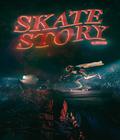
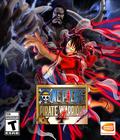
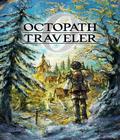
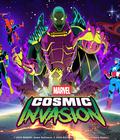
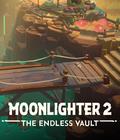
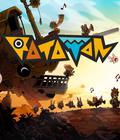
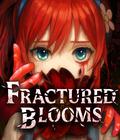

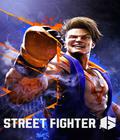 With more ways than ever to play, Street Fighter 6 represents the next evolution of the Street Fighter series.
With more ways than ever to play, Street Fighter 6 represents the next evolution of the Street Fighter series.

















































